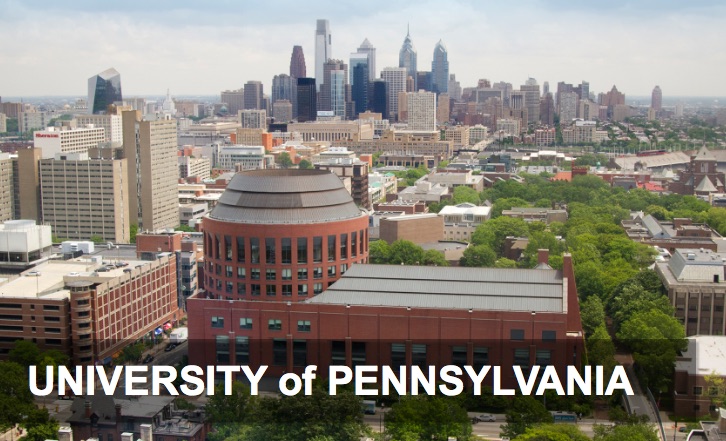 The University of Pennsylvania is comprised of 16 schools, including four undergraduate institutions. The college offers over 90 areas of study to its students, including dual degrees that broaden the students’ academic preparation as well as graduate school and career opportunities. The College at Penn, Engineering and Applied Science, Nursing and The Wharton schools all offer students the ability to learn from experts in their disciplines in order to be exceptionally prepared for life post-graduation.
The University of Pennsylvania is comprised of 16 schools, including four undergraduate institutions. The college offers over 90 areas of study to its students, including dual degrees that broaden the students’ academic preparation as well as graduate school and career opportunities. The College at Penn, Engineering and Applied Science, Nursing and The Wharton schools all offer students the ability to learn from experts in their disciplines in order to be exceptionally prepared for life post-graduation.
Undergraduate students at the University of Pennsylvania are also privileged to attend one of the leading research universities in the country. The college has a budget of nearly a billion dollars annually to contribute to research and development, addressing crucial problems and making groundbreaking discoveries in many areas, including medicine, science and technology. Students can collaborate with faculty to investigate inquiries that are relevant to their interests and academic work, and participate in the discovery of knowledge that benefits society and the world.
History of University of Pennsylvania
The historians of the University of Pennsylvania considered the school to have been founded in 1740 by George Whitefield in order to serve as both a charity school and a house of worship. However, Whitefield ran out of funds and the construction of the school was delayed. Benjamin Franklin resurrected the institution later in the decade by accumulating a group of trustees and purchasing Whitefield’s building. The school opened in 1751 as the Academy and Charitable School in the Province of Pennsylvania, aimed at instructing students of all socioeconomic classes.
Under the tutelage of Franklin first as President and then as a trustee, the University of Pennsylvania was a pioneer in higher education. In 1765, the previous iteration of the university established the first medical school in the American colonies. The school also become the first institution of higher education in the United States to be designated as a university in 1779. Franklin envisioned a unique and innovative approach to education in which young people would be trained in business, government and public service. Although he was initially overruled and the college functioned more traditionally as a Christian ministry, Franklin’s ideas were later adopted by the University of Pennsylvania and other college and universities.
Penn eventually moved from its original location to a new campus in 1802 as it expanded and outgrew the land. However, by the end of the 19th century, the campus was no longer meeting the evolving needs of the university, and the school was moved to its current location in West Philadelphia. The campus is now 302 acres in total, featuring academic buildings, research centers, and the first student union and double-decker football stadium in the country.
Campus Life at Penn
The University of Pennsylvania campus features many diverse organizations and activities for students to participate in. Social, political, religious and cultural activities appeal to students of all backgrounds, and allow them to interact with classmates who have similar and divergent views and interests to their own. The surrounding area of West Philadelphia also offers students a vibrant community in which students can seek entertainment, sports, and cultural experiences in addition to community service opportunities.
Students can also look forward to many fun traditions on campus. At the beginning of their freshman year, students march in, sit together, and listen to speeches from campus leaders at the Convocation, a similar and bookending experience to their graduation four years later. Hey Day, first celebrated in 1916, honors the passage of juniors into their senior year as they wear red and march around campus. Perhaps the most lighthearted tradition is the throwing of toast onto the football field after the third quarter of each home game, as a nod to the song lyric, “Here’s a toast to dear old Penn”.
Financial Aid for Penn Students
The University of Pennsylvania supports students of all socioeconomic classes in affording their tuition to the college through the All Grant-Based Program. Instead of offering loans to students, all financial aid is awarded through grants and work-study opportunities to students who are dependents enrolling in an undergraduate school. The amount of financial aid awarded is proportional to the total family income.

Leave a Reply